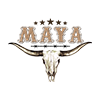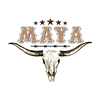Co‑Branded Apparel & Collaboration Drops with DTF Transfers: UV DTF Strategies to Launch Partner Collections Fast — Blank T‑Shirts, Hoodies, Hats & Dropshipping
Co‑branded apparel and collaboration drops are one of the fastest, highest‑ROI ways for entrepreneurs, small brands, and Etsy/Shopify sellers to generate buzz and revenue. Leveraging DTF transfers—especially UV DTF—lets you move from concept to customer quickly while maintaining high print quality on blank t‑shirts, hoodies, hats, and other garments. This long‑form guide covers beginner concepts, advanced production tips, marketing strategies, pricing models, and operational workflows so you can run smooth, profitable partner drops.
Meta overview: what you’ll learn
- What UV DTF and DTF transfers are and why they matter for co‑branded drops.
- How UV curing speeds production and improves print durability.
- Step‑by‑step workflows to launch a collaboration drop in 7–14 days.
- Design, file prep, press settings, and substrate tips for shirts, hoodies, and hats.
- Marketing, fulfillment, dropshipping, and real pricing examples.
- Why MAYA TX is a practical partner for same‑day pickup, nationwide shipping, and dropshipping fulfillment.
What is DTF and UV DTF?
DTF (Direct‑to‑Film) transfers are digitally printed designs on a polymer film that are heat‑pressed onto garments using a powdered adhesive. UV DTF is a variation where inks are cured with ultraviolet light, which speeds drying, stabilizes color, and improves adhesion and durability. In practice, UV curing reduces production bottlenecks, allows faster handling of prints, and improves washfastness—especially important for photographic and multicolor artwork common in co‑branded drops.
Why UV DTF is ideal for collaboration drops
- Low minimums — ideal for limited edition runs and tests.
- Fast turnaround — UV curing shortens drying time so you can ship sooner.
- High fidelity — excellent color accuracy and detail for logos, gradients, and photos.
- Substrate versatility — works on cotton, poly blends, and many hat materials.
- Cost effective at small to mid volumes compared to screen printing setup costs.
DTF vs. Screen Print vs. Embroidery: how to choose
- DTF / UV DTF: Best for full‑color, photographic prints, and low runs. Versatile across substrates and faster to set up.
- Screen Printing: Best for large, single or few color runs. Low per‑unit cost at high volumes but higher setup time and minimums.
- Embroidery: Best for premium, textured branding on polos and caps. Higher cost per unit but premium perceived value.
For co‑branded drops where speed, color fidelity, and small batches are priorities, UV DTF is often the most practical choice.
Preparing your collaboration: strategy and creative alignment
Before you print, align on the fundamentals to avoid costly revisions:
- Brand guidelines: logos, safe areas, clearspace, and color codes (Pantone, HEX/RGB).
- Design ownership and approvals: agree in writing who owns the creative and how revenue or royalties are split.
- Product mix: decide quantities per SKU (blank t‑shirts, hoodies, hats) and sizes.
- Launch window and marketing plan: preorders, influencer drops, or pop‑up events.
Artwork and file prep for UV DTF
Good print results start with proper files. Common prep rules:
- Resolution: 300 DPI at final print size for raster images.
- Color: work in RGB for printing workflows that handle color separation; request soft proofing if possible.
- White underbase: include a properly keyed white layer for dark garments.
- Transparent elements: finalize layers and flatten or export with alpha where required by your transfer vendor.
- File formats: PDF, PSD, TIFF, or high‑res PNGs are typical. Vector AI/EPS is best for logos.
Production workflow: example 7–14 day timeline
- Day 1: Finalize designs, approve colorways, and upload files to your print vendor.
- Day 2: Order physical samples or request digital proofs. If local, pickup same‑day (MAYA TX offers same‑day pickup in Austin).
- Day 3–5: Approve samples. Finalize product pages and marketing assets (photography, descriptions, tags).
- Day 6–9: Full print run of UV DTF transfers, UV curing, and QC of transfers.
- Day 10–14: Apply transfers to blanks (or route orders through dropshipping fulfillment) and ship to customers.
This timeline shortens if you use dropshipping fulfillment where transfers are printed and applied by the supplier on demand.
Garment specifics: blank t‑shirts, hoodies & hats
Not all garments behave the same with transfers. Quick tips:
- Blank t‑shirts: Ringspun cotton and cotton blends provide good hand feel and print adhesion. Use heat press temps around 320–330°F for 12–18 seconds as a starting point, but always validate with your transfer provider.
- Hoodies: Fleece naps require longer dwell times and slightly lower temps to avoid scorching. Consider 300–320°F for 15–25 seconds depending on adhesive and fabric weight.
- Hats & caps: Use cap boards and reduce pressure; curved surfaces need care. UV DTF works well on structured caps when adhesive and press technique are optimized.
Always run a small QC batch across sizes and colors to validate press settings and wash performance.
Quality control checklist before shipping
- Color and registration: match approved samples and check for white underbase issues.
- Adhesion test: ensure no cracking, peeling, or edge lift after stress test and wash cycles.
- Garment inspection: correct size tags, no loose threads, and consistent fold/packaging.
- Labeling and compliance: include care labels and ensure any co‑branding language is accurate.
Pricing & margin example for sellers
Example per‑unit cost for a co‑branded t‑shirt (illustrative):
- Blank t‑shirt cost: $5.00
- UV DTF transfer + application: $4.50
- Packing & label: $0.75
- Shipping & handling (average): $3.00
- Total cost: $13.25
If you price the item at $28.00, gross margin ≈ $14.75 (53%). Factor platform fees (Etsy/Shopify + payment processor) and marketing costs — typical net margin might be 30–40% depending on ad spend and shipping savings.
Marketing & launch tactics for high‑impact drops
To maximize visibility and conversions:
- Pre‑launch email list: build anticipation with early access for subscribers.
- Limited window + numbered editions: create scarcity for higher AOVs.
- Influencer seeding: send samples to partners and micro‑influencers for organic posts.
- Countdowns & live events: use IG Live or TikTok to host a launch moment.
- Paid ads targeting lookalike audiences and retargeting your warm traffic.
Dropshipping & fulfillment: how it streamlines collaborations
Dropshipping removes the need to hold finished inventory. When you use a print partner like MAYA TX for dropshipping fulfillment:
- Orders from your Etsy/Shopify store are routed to the printer who prints, applies transfers, packs, and ships directly to customers.
- No warehousing or order packing on your part; you retain brand control and margin while scaling faster.
- MAYA TX offers same‑day pickup for local partners, nationwide shipping, and integrated dropshipping options for sellers who want turnkey fulfillment. Learn more: MAYA TX Dropshipping.
Handling returns, exchanges & customer support
- Clearly state your returns policy for custom apparel and co‑branded items; many sellers offer exchanges or store credit for custom drops.
- Document product care and washing instructions to minimize adhesion issues.
- Set expectations: include production lead times, especially for preorders or made‑to‑order items.
Trending design ideas for collaboration drops
Popular motifs that sell well in 2025:
- Minimal co‑brand lockups and seal marks (subtle, lifestyle‑friendly).
- Bold, retro color blocking and 90s/00s nostalgia graphics.
- Localized designs that combine brand names with city skyline or neighborhood references — great for pop‑ups and same‑day pickup.
- Sustainable messaging and small runs on organic blanks for eco‑conscious audiences.
Real resources & further reading
- Printful — for industry print‑on‑demand trends and fulfillment models: Printful.
- Shopify Blog — e‑commerce growth, prelaunch strategies, and product pages: Shopify Blog.
- Oberlo — dropshipping insights and supplier best practices: Oberlo.
Side‑hustle ideas: monetize collaborations
- Local brand partnerships — collaborate with cafes, creators, and events for co‑branded merch sold at point‑of‑sale or online.
- Limited capsule collections with influencers — revenue share or flat fees plus royalties.
- Seasonal micro‑drops tied to holidays, reunions, or community events.
- Subscription models — monthly capsule gear featuring rotating co‑brands.
Frequently asked questions (quick answers)
- Can UV DTF be washed often? Yes—when properly applied and cured, UV DTF shows strong wash durability similar to standard DTF; always test samples first.
- Are there minimum order quantities? UV DTF supports very low minimums or single‑piece runs when using dropshipping fulfillment.
- Is embroidery better for caps? Embroidery offers a premium look for caps, but UV DTF allows more color detail and photographic prints. Choose based on design and price point.
Why choose MAYA TX for your next collaboration drop
MAYA TX helps small brands and sellers move quickly:
- Same‑day pickup in Austin — perfect for local partners and last‑minute sample approvals.
- Nationwide shipping and reliable logistics to reach customers across the U.S.
- Dropshipping fulfillment — we print and ship orders directly to customers so you can scale without inventory headaches.
- Large selection of blank apparel — consistent blanks for t‑shirts, hoodies, hats, and specialty pieces: Blank Apparel.
- DTF Transfers and UV DTF specialties: request transfer production and technical advice: DTF Transfers | UV DTF.
Final checklist before you launch
- Finalize designs and approvals with partners.
- Order physical samples and run wash tests.
- Set up product pages, preorders, and shipping rules on Shopify/Etsy.
- Coordinate fulfillment (dropship or bulk apply) and schedule launch marketing.
- Provide customer support scripts and return policies for custom drops.
Call to action
Ready to launch a co‑branded collection quickly and professionally? Order UV DTF transfers, shop blank t‑shirts, hoodies, and hats, or set up dropshipping fulfillment with MAYA TX. Visit our DTF Transfers page (https://txmaya.com/dtf-transfers), explore UV DTF details (https://txmaya.com/uv-dtf), or browse blanks (https://txmaya.com/blank-apparel). Contact us for same‑day pickup in Austin, nationwide shipping, and dropshipping fulfillment — we print and ship so you can focus on partnerships and growth.
For further reading and operational best practices, check Printful, Shopify Blog, and Oberlo. Launch your next collaboration with UV DTF and bring partner collections to market faster with professional quality and minimal risk.


















